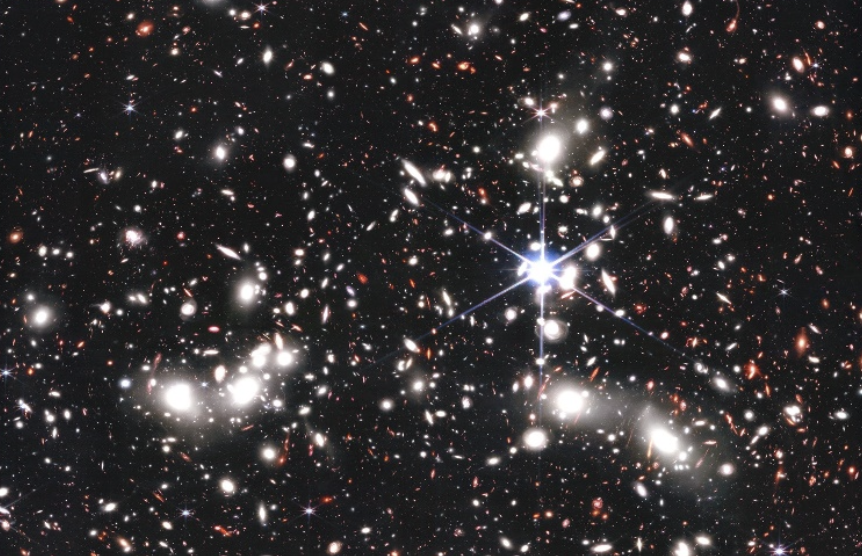Insider Brief:
- The James Webb Space Telescope (JWST) has provided humanity’s first glimpse into the spectra of very low-mass galaxies revealing that small galaxies were pivotal in driving cosmic reionization.
- The technological feat was made possible because of the JWST’s unparalleled sensitivity and the gravitational lensing phenomenon facilitated by the Abell 2744 cluster.
- The discoveries are key in learning more about the formation of the earliest galaxies and understanding the genesis of our present-day cosmic structures.
The James Webb Space Telescope (JWST), a collaborative effort between NASA and ESA, has provided humanity’s first glimpse into the spectra of very low-mass galaxies only centuries after the Big Bang. The technological feat was made possible because of the JWST’s unparalleled sensitivity and the gravitational lensing phenomenon facilitated by the Abell 2744 cluster. Acting as cosmic magnifiers, nearby galaxies distort space, amplifying the light emitted by background galaxies.
Published in Nature magazine on February 28, 2024, the research conducted by an international team from the Universities of Pittsburgh, Swinburne University of Technology, Texas in Austin, and the Paris Astrophysics Institute (Sorbonne University/CNRS) has shed light on a pivotal epoch in cosmic history: reionization. This transformative period, which occurred 500 to 900 million years post-Big Bang, marked the shift of neutral hydrogen, which was prevalent in the early Universe, into ionized gas.
While several hypotheses regarding the sources responsible for reionization existed, confirmation remained elusive, particularly concerning low-mass galaxies due to their faint luminosity. However, through meticulous spectroscopic observations, the international team, led by Hakim Atek, astrophysicist at Sorbonne University, has deciphered this cosmic mystery.
Their findings unveil that small galaxies, akin to dwarf galaxies in the local Universe, were pivotal in driving cosmic reionization. Leveraging the JWST’s deep observations and the gravitational lensing effect of the Abell 2744 cluster, the researchers discerned these diminutive galaxies’ abundance and ionizing properties during the Universe’s infancy.
Atek explains, “We found that small galaxies outnumbered massive galaxies by about a hundred to one during this epoch of reionization of the Universe.” Moreover, their observations reveal that these small galaxies emitted a substantial amount of ionizing photons, surpassing conventional assumptions by fourfold, thus exceeding the requisite photon flux for reionization.
Looking ahead, the researchers aim to expand their study to corroborate these findings on a broader scale. Beyond elucidating the reionization process, these revelations are key to unravelling the formation of the earliest galaxies, laying the groundwork for understanding the genesis of our present-day cosmic structures over billions of years.
If you found this article to be informative, you can explore more current space industry news, exclusives, interviews, and podcasts.
Share this article:










